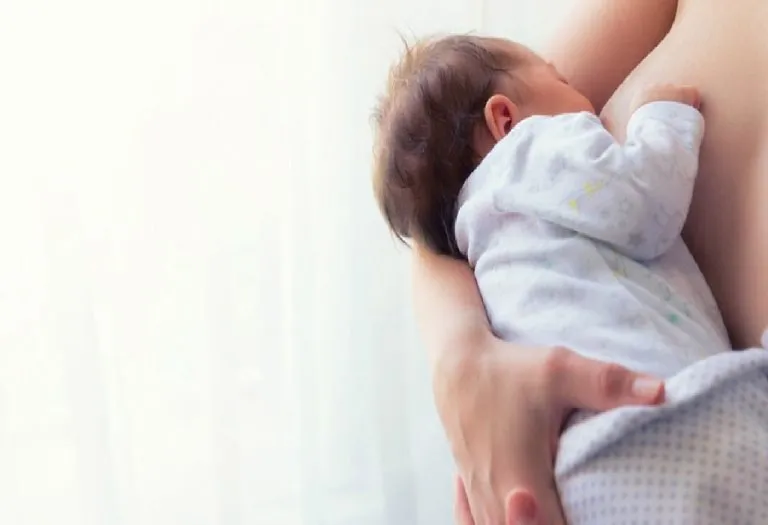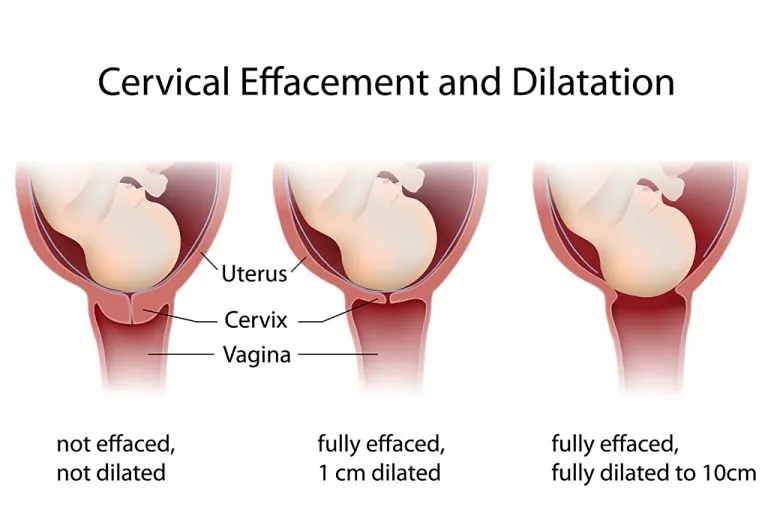Baby Crowning or Crowning in Labor: What It Is & When It Happens

They say that becoming a mother completes a woman. Giving birth to a child is a divine experience; after all, you can bring life into this world, which should make you feel special. A woman’s body is designed to nurture the baby right from conception. You will notice many changes in your body as you go through the phase of pregnancy. Your body starts preparing for birth many days before you go into labour.
One of the most significant moments in this journey is the baby crowning, where the baby’s head emerges at the vaginal opening during delivery. This stage, often called the “ring of fire” in childbirth, is both intense and empowering, as it marks the final stretch of labour and the beginning of welcoming your baby.
Keep reading to learn more about when crowning in childbirth happens and how to prepare for it.
What Is Baby Crowning?
During labour, with each contraction, the head of your baby starts appearing through your vaginal opening. These contractions tighten and relax the uterine muscles that help the baby to come out through the birth canal. This is the time when you need to start pushing. This will make the baby’s head reach the opening faster. However, when the contraction is over, the head will disappear.
According to medical professionals, the definition of crowning in labour is the moment when your baby’s head is almost fully outside without slipping back inside (1). The cervix effaces 100% and dilates 10 cm before crowning.
So, if you have wanted to know what crowning means in pregnancy, this is exactly what it is.
What Is the Duration of Baby Crowning?
The crowning process can last for a couple of hours if it is your first delivery. The duration will go down with subsequent deliveries (4).
Stages of Labour
Your body starts preparing for the event weeks before the first day of labour. Your baby’s head moves into your pelvis, and this is known as engagement.
There are several stages of labour. It starts with contractions and ends with the transition. The most intense stage of labour is the very first stage. However, it is also the shortest.
The ‘active labour’ stage follows next. The contractions are longer and more intense, and your cervix dilates rapidly. Also known as the pushing phase, this stage can coincide with your cervix being completely dilated. This is when crowning in labour starts (2).
How Is Baby Crowning Performed?
Natural childbirth is a painful process, and the only way to get relief from the pain is by delivering your baby. Here are some effective tips that you can keep in mind to manage the pain when giving birth and crowning:
1. Find Your Best Position
The ‘best’ position for one woman might be different from another. Some of the effective ones are (3):
- Side-lying position: This is best if you want a controlled and slow childbirth.
- Squatting position: This is the best when you have a large baby, or you have a quick labour.
- All Fours Position: This is also recommended in the case of a large baby or if your baby is in the posterior position.
2. Pushing and Breathing
During birth crowning, you will experience an urge to push, and this is natural. Your uterus contracts and sends you signals to push the baby out.
It is important to remember that this pushing is not the same as pushing your abdominal muscles to relieve yourself. You do not have to bear down while holding your breath; your baby will not get sufficient oxygen if you do this. You must push and breathe in such a way that your baby comes down slowly through the birth canal, in a controlled fashion. This will be comfortable for you, and you can conserve your energy as well. The risk of damaging the perineum also reduces.
Keep your mouth open with your neck and jaw relaxed during pushing birth crowning. Learn the art to exhale properly. During labour, put your hands under your breasts, on your abdomen, and these muscles should tighten.
3. Tips for Fighting the Urge to Push
- Keep the muscles between your vagina and rectum relaxed by leaning back.
- Relax, breathe, and ask your midwife to give you a massage.
- Deep breathing exercises will help your body to relax.
- Do not fight off the contractions. Use them to make the delivery easy.
How Does It Feel When Your Baby Is Crowning?
The feeling is referred to as the ‘ring of fire’. Your vaginal tissues get stretched as your baby’s head becomes visible, and this leads to a burning sensation. It stays till the baby’s head slips inside.
Stop pushing the moment you feel this burning sensation. This will prevent your tissues from getting damaged. The first stage of labour comes to an end with the end of the burning sensation.
This burning sensation does not last for a long time, but makes you feel numb. The stretching of your baby blocks the vaginal tissue, leading to the numbness.
How to Prepare for Natural Birth Crowning?
During the ring of fire, the midwife will massage your perineum to reduce the burning and risk of tears. An episiotomy might be recommended for a smooth labour (5).
A lubricating finger is inserted to massage the perineum for 10 minutes, and this can start from the 35th week of pregnancy.
Preventing Tears
Preventing tears during childbirth is a common concern for many expectant mothers, especially during the crowning phase. While some tearing may occur naturally as the body stretches to deliver the baby, here are steps you can take to reduce the risk (6).
- Eat healthily and make sure you work out on a regular basis, so that your muscles are strong enough to withstand the pressure.
- Lubricating the area with oil can help the baby come out easily without stretching your muscles too much.
- Lie on your side and push as this will reduce the pressure on your perineum.
- Push slowly, but firmly, and do that while taking long breaths.
- Water birth is also effective in preventing tears.
How Can You Relieve the Baby Crowning Pain?
- Ask the midwife or your partner to hold a piece of flannel against the muscles present between the anus and vagina (perineum). This will reduce the chances of any tear and painful birth crowning.
- You can also try a warm compress to reduce the pain.
- Massaging warm oil on the skin will make it soft and allow for more stretching.
What Happens After Baby Birth Crowning?
During crowning, the doctor will be able to point out if your umbilical cord is wrapped around your baby’s neck or if there is any other kind of obstacle. If your baby gets stuck in the canal, the doctor will manually deliver the baby.
The baby’s complete head emerges after crowning and then the rest of the body.
FAQs
1. Is crowning different in water births?
In water births, crowning often feels less intense due to the warm water, which helps relax the perineal tissues and may reduce the burning sensation (7).
2. Does everyone experience the “ring of fire” during pregnancy?
Not everyone feels the intense burning sensation. Those with epidural anaesthesia or who have had prior vaginal births may experience less discomfort during crowning.
Crowning is a crucial part of the delivery process known as the pushing phase. It is an indication that the baby is on its way out. Though painful, it is manageable. Apart from the numerous remedies involved, the body has its own internal mechanisms to handle the pain. Make sure you reach out to your gynaecologist or obstetrician before your delivery to address any queries or concerns you may have. It is always better to be prepared before you go through the life-changing process of childbirth.
References/Resources:
1. Stages of Labor; Beth Israel Deaconess Medical Center; https://www.bidmc.org/centers-and-departments/obstetrics-and-gynecology/programs-and-services/pregnancy/labor-and-delivery/stages-of-labor
2. Labour and Delivery Care Module: 5. Conducting a Normal Delivery; The Open University;
https://www.open.edu/openlearncreate/mod/oucontent/view.php?id=273&printable=1
3. What are the stages of labor?; NICHD; https://www.nichd.nih.gov/health/topics/labor-delivery/topicinfo/stages
4. Episiotomy; Cleveland Clinic; https://my.clevelandclinic.org/health/treatments/22904-episiotomy
5. Reducing your risk of perineal tears; RCOG; https://www.rcog.org.uk/for-the-public/perineal-tears-and-episiotomies-in-childbirth/reducing-your-risk-of-perineal-tears/
6. Pain relief in labour; NHS; https://www.nhs.uk/pregnancy/labour-and-birth/what-happens/pain-relief-in-labour/
Also Read:
Assisted Delivery
Baby’s Head Engaged
Baby Position in Womb
Was This Article Helpful?
Parenting is a huge responsibility, for you as a caregiver, but also for us as a parenting content platform. We understand that and take our responsibility of creating credible content seriously. FirstCry Parenting articles are written and published only after extensive research using factually sound references to deliver quality content that is accurate, validated by experts, and completely reliable. To understand how we go about creating content that is credible, read our editorial policy here.

























